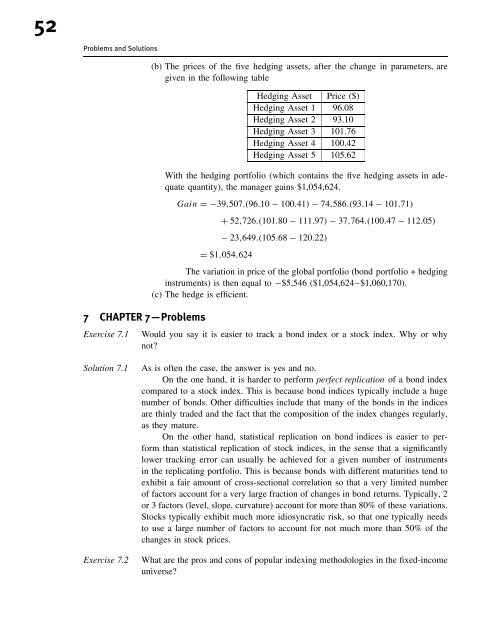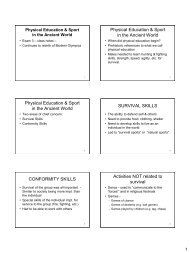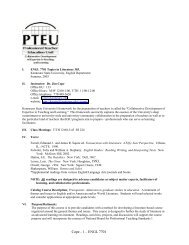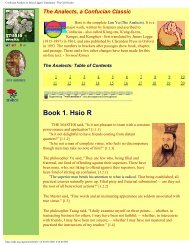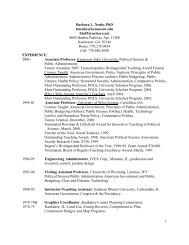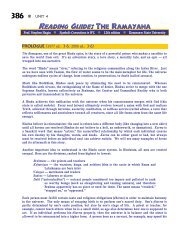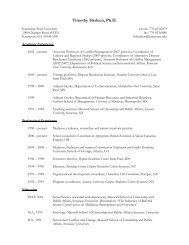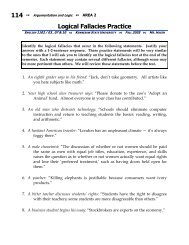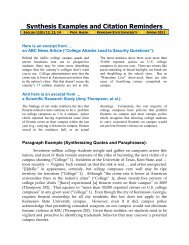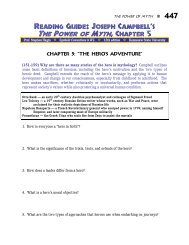Create successful ePaper yourself
Turn your PDF publications into a flip-book with our unique Google optimized e-Paper software.
52<br />
Problems <strong>and</strong> <strong>Solutions</strong><br />
7 CHAPTER 7—Problems<br />
(b) The prices of the five hedging assets, after the change in parameters, are<br />
given in the following table<br />
Hedging Asset Price ($)<br />
Hedging Asset 1 96.08<br />
Hedging Asset 2 93.10<br />
Hedging Asset 3 101.76<br />
Hedging Asset 4 100.42<br />
Hedging Asset 5 105.62<br />
With the hedging portfolio (which contains the five hedging assets in adequate<br />
quantity), the manager gains $1,054,624.<br />
Gain =−39,507.(96.10 − 100.41) − 74,586.(93.14 − 101.71)<br />
+ 52,726.(101.80 − 111.97) − 37,764.(100.47 − 112.05)<br />
− 23,649.(105.68 − 120.22)<br />
= $1,054,624<br />
The variation in price of the global portfolio (bond portfolio + hedging<br />
instruments) is then equal <strong>to</strong> −$5,546 ($1,054,624–$1,060,170).<br />
(c) The hedge is efficient.<br />
Exercise 7.1 Would you say it is easier <strong>to</strong> track a bond index or a s<strong>to</strong>ck index. Why or why<br />
not?<br />
Solution 7.1 As is often the case, the answer is yes <strong>and</strong> no.<br />
On the one h<strong>and</strong>, it is harder <strong>to</strong> perform perfect replication of a bond index<br />
compared <strong>to</strong> a s<strong>to</strong>ck index. This is because bond indices typically include a huge<br />
number of bonds. Other difficulties include that many of the bonds in the indices<br />
are thinly traded <strong>and</strong> the fact that the composition of the index changes regularly,<br />
as they mature.<br />
On the other h<strong>and</strong>, statistical replication on bond indices is easier <strong>to</strong> perform<br />
than statistical replication of s<strong>to</strong>ck indices, in the sense that a significantly<br />
lower tracking error can usually be achieved for a given number of instruments<br />
in the replicating portfolio. This is because bonds with different maturities tend <strong>to</strong><br />
exhibit a fair amount of cross-sectional correlation so that a very limited number<br />
of fac<strong>to</strong>rs account for a very large fraction of changes in bond returns. Typically, 2<br />
or 3 fac<strong>to</strong>rs (level, slope, curvature) account for more than 80% of these variations.<br />
S<strong>to</strong>cks typically exhibit much more idiosyncratic risk, so that one typically needs<br />
<strong>to</strong> use a large number of fac<strong>to</strong>rs <strong>to</strong> account for not much more than 50% of the<br />
changes in s<strong>to</strong>ck prices.<br />
Exercise 7.2 What are the pros <strong>and</strong> cons of popular indexing methodologies in the fixed-income<br />
universe?


